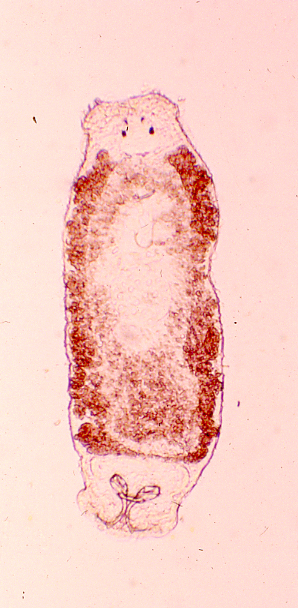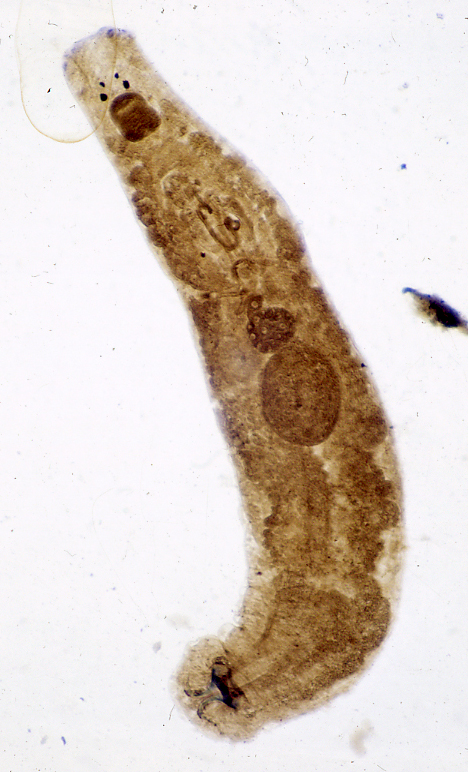
| Parasite | Pseudodactylogyrus bini |
|---|---|
| Taxonomy | Plathyhelminthes, Monogenea, Monopisthocotylea |
| Hosts | Japanese eel (Anguilla japonica) |
| Infection site | Gill |
| Clincal signs | Infected fish exhibits no external abnormality. Excessive mucus is secreted in the gill. |
| Parasitology | The parasite (body length ca. 2 mm) attaches by a haptor with a pair of anchors (length 50-60 mm) at the posterior end. Reproduction and development of the parasite are temperature-dependent. The parasite develops to adults for 8 days at 25 C., 7 days at 30 C. after larval settling (postlarval development). The highest oviposition rate (number of eggs delivered per parasite) was recorded at 30 C. (ca. 17 eggs per parasite). Eggs hatch for 3-4 days at 25 C., 2-3 days at 30 C. (Buchmann, 1988). Intermediate hosts are not involved, and the parasite directly transmits from fish to fish. |
| Pathology | Pseudodactylogyrus bini could cause the growth retardation of fish. Juvenile eels are more susceptible to the parasite. The proliferated tissue is observed in the peripheral area of the lesion because the anchors in the haptor penetrates deeply into the gill tissue. A lamellar fusion occurrs following to the proliferation of the tissue, and the gill becomes clubbing. As a result, deteriorations of the respiratory system lead the eels to the death (Ogawa, 2004). |
| Health hazard | Since this parasite is not infectious to human, it is harmless in food hygiene. |
| Diagnosis | The parasite can be identified by the morphological observation in a flattened specimen. Pseudodactylogyrus bini can be distinguished from P. anguillae, a monogenean infecting to eels, by the morphology. P. anguillae is smaller (body length 1.0-1.5 mm) and has larger anchors (ca. 90 mm). |
| Other information | This parasite was previously reported only in Japan, China and Taiwan. However, it is now known to infect to Anguilla anguilla in Europe and Anguilla rostrata in U.S.A. Trichlorfon treatment (0.3-0.5 ppm) are effective to kill the parasite. Drying of the ponds before the introduction of the new eels is recommended for killing the eggs of the parasite (Ogawa, 2004). |
| References | Buchmann, K. (1988): Temperature- dependent reproduction and survival of Pseudodactylogyrus bini (Monogenea) of the European eel (Anguilla anguilla). Parasitol. Res., 75, 162-164. Ogawa, K. (2004): Monogenean diseases. Infectious and parasitic diseases of fish and shellfish. (Wakabayashi, H. and K. Muroga), Koseisha koseikaku, Tokyo pp. 353-379. (In Japanese) |


Fig. 2. P. bini (left) and P. anguillae (right).

Fig. 1. Gill of Japanese eel infected with P. anguillae.